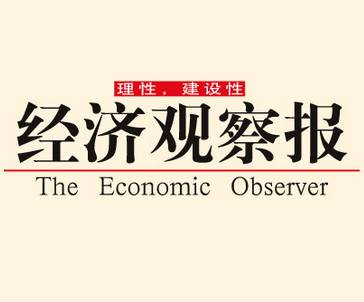
In future scenarios, edge computing will primarily be applied in the Internet of Things (IoT).

Editor’s Note: Edge computing refers to an open platform that integrates networking, computing, storage, and application core capabilities, providing services close to the source of data. Applications initiated at the edge generate faster network service responses, meeting the basic needs of industries in real-time operations, application intelligence, and security and privacy protection. Currently, many tech companies have begun to lay out their strategies in edge computing.
Edge computing and cloud computing are more like complementary relationships. Imagine if, with the increase of smart devices, all data were uploaded to the cloud, requiring vast storage space and potentially causing network congestion. In such cases, it becomes necessary to process large data at the edge server side. Edge computing reduces the data transmission steps, significantly enhancing data security while also saving transmission time, allowing for timely responses to on-site issues.


In the past two years, there has been much discussion about cloud computing, but most readers may not be particularly clear about the concept of edge computing. What exactly is edge computing, and why are many companies investing in it?
In future scenarios, edge computing will primarily be applied in the Internet of Things. Around 2000, the rise of the Internet gave birth to a wave of Internet companies. Subsequently, the arrival of the mobile Internet era spawned a new wave of mobile Internet companies like Tencent. From now on, the IoT will enter a phase of technological maturity, and more enterprise applications will mature in the IoT environment, which is why there has been so much talk about IoT in recent years.

Edge computing provides the computational power needed at the edge of the data source, that is, at the data generation and application edge. For example, current autonomous vehicles and electric vehicles commonly use IoT technology. In the future, all vehicles will be connected, offering a variety of rich applications for driving and personal use. In this process, it is impractical to send all collected data and real-time judgment applications back to the cloud computing center for processing; doing so would create significant delays. Therefore, a large amount of real-time data needs to be pre-processed at the edge. Especially in the network application scenarios of IoT, computation needs to occur at the edge rather than returning to a centralized cloud computing center. This gives rise to the concept of edge computing, which is closely related to IoT. For instance, in manufacturing, edge computing can help companies solve specific issues such as online quality inspection and equipment maintenance. In the future, we will see an increasing number of innovative business models like smart cities, smart factories, smart manufacturing, and smart retail, which will require edge computing devices and gateways for data collection, processing, and uploading during their IoT technology applications. These devices, along with corresponding solutions, combined with distributed databases and distributed data processing, form a complete edge computing system. However, this system does not exist independently; it interacts with cloud computing through a wealth of data and applications.

IDC data shows that by 2020, the total market size related to IoT will approach $20 billion, with edge computing-related devices and software occupying varying proportions. However, the application of IoT is still in its infancy, even globally. The entire ecosystem of edge computing or IoT is very complex, and the market landscape has not yet formed; there are no so-called leading manufacturers, and no single company can claim to be the sole king of IoT solutions. Companies will enter the IoT market by leveraging their own capabilities and business strengths, and Lenovo is entering from the perspective of computing devices. Thus, in the overall market, companies engage in a competitive yet cooperative relationship; in certain areas, companies producing edge computing devices may compete, but they also collaborate. From Lenovo’s discussions with chief information officers from various Chinese enterprises, it appears that their understanding of edge computing is still vague, and they are contemplating what edge computing truly is. However, when they delve into the industry scenarios of their respective companies, their perspectives are broadened, and they are eager to join Lenovo’s discussions because they want to capture new dynamics in market technology development. As they face upgrades and transformations, companies are thinking about how to leverage existing new technologies to achieve commercial value; in the past, they relied on cloud computing and big data, but now they are beginning to focus on IoT and artificial intelligence, hoping to explore the potential applications of new technologies in real-world scenarios, including advanced application cases already practiced abroad.

In the mobile Internet or Internet era, the protocol is the standard TCP/IP protocol, and some Internet standards have been eliminated. In today’s industrial network era, there are significant differences in industrial network standards among different companies, which explains why previous industrial networks or devices were specialized and could not communicate with each other. However, Lenovo believes that in the future IoT era, industrial network standards will gradually form a unified standard through continuous elimination and retention. The biggest challenge for IoT applications now is how to build an ecosystem that helps companies solve real business problems. Whether it is computing devices, sensors, or networks, using them in isolation does not make sense for enterprises. Each enterprise’s applications are different; for example, a mechanical equipment manufacturing factory and an electronics production factory have vastly different applications, production management processes, and quality control standards. Therefore, IoT will definitely be a decentralized market and field in the future, and building an IoT ecosystem is crucial. Currently, several IoT alliance organizations have been established in China, and Lenovo is actively participating in them. Overall, these organizations are still in the exploratory stage. They are primarily focused on how to leverage IoT and edge computing to create new commercial value. Lenovo has already established a joint laboratory for industrial IoT with a certain optical fiber enterprise in Wuhan. Lenovo will not only collaborate with ecosystem enterprises but will also innovate in collaboration with customers, jointly investing in research and development, exploring specific solutions for IoT in various industry fields, ultimately addressing issues of production efficiency and effectiveness for enterprises, and creating real commercial value. (Author Liu Zheng is the Vice President of Lenovo Group and General Manager of Commercial Business in China; this article is organized from interviews with reporters Chen Yifan and intern Li Xiuli.)


Insights into the Changing Business World
 Decoding | Hai The Confidence and Concerns of Haidilao’s IPO
Decoding | Hai The Confidence and Concerns of Haidilao’s IPO
 Token Fund “Winter” has Arrived, the Bubble Under the Wealth-Making Myth is Disappearing
Token Fund “Winter” has Arrived, the Bubble Under the Wealth-Making Myth is Disappearing

On the 40th Anniversary of Reform and Opening Up, Zhou Qiren Discusses Reform Again: “The Elephant has a Cold, We Can’t Just Feed It with a Small Spoon”

